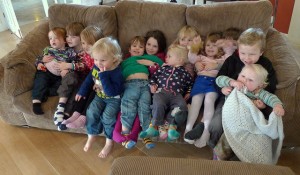
About 20 percent of children who have older siblings with autism also develop the disorder. Of those children, 57 percent show symptoms as early as 18 months.
The findings stress the need for early and repeated screening in the first three years of life so that, if necessary, intervention can begin as soon as possible.
A large-scale study has identified specific social-communicative behaviors that distinguish infants with autism spectrum disorder (ASD) from their typically and atypically developing high-risk peers as early as 18 months of age.
“While the majority of siblings of children with ASD will not develop the condition themselves, for those who do, one of the key priorities is finding more effective ways of identifying and treating them as early as possible,” says Katarzyna Chawarska, associate professor in the Child Study Center and the Department of Pediatrics at Yale University School of Medicine.
“Our study reinforces the need for repeated diagnostic screening in the first three years of life to identify individual cases of ASD as soon as behavioral symptoms are apparent
Pattern of Behavior
For the study, published in the Journal of the American Academy of Child & Adolescent Psychiatry, researchers pooled data from eight sites participating in the Autism Speaks Baby Siblings Research Consortium. The team closely examined social, communicative, and repetitive behaviors in 719 infants when they were 18 months old.




